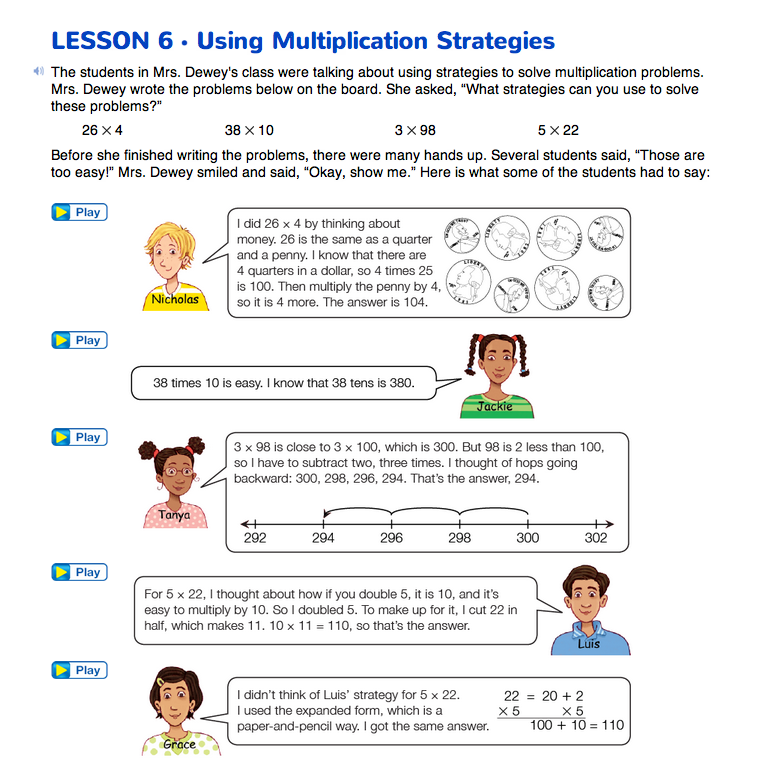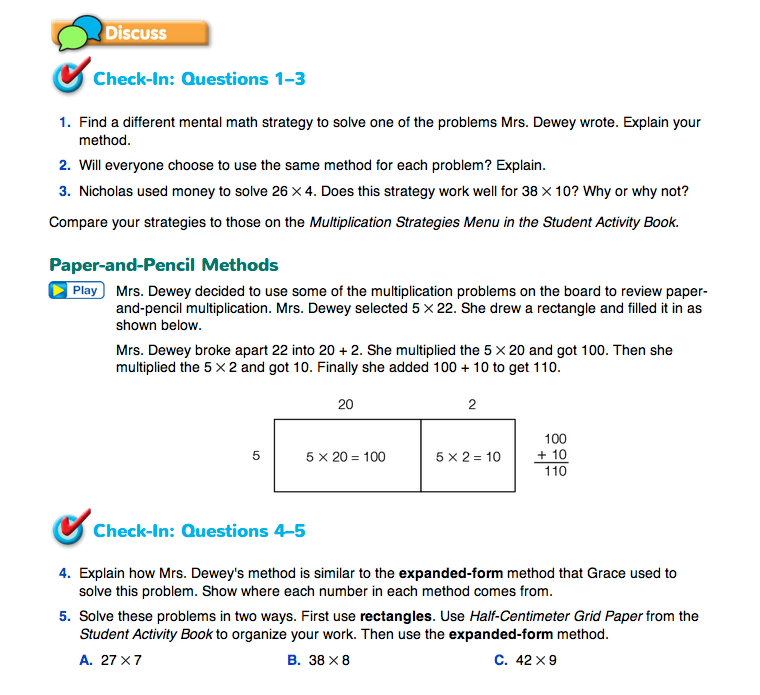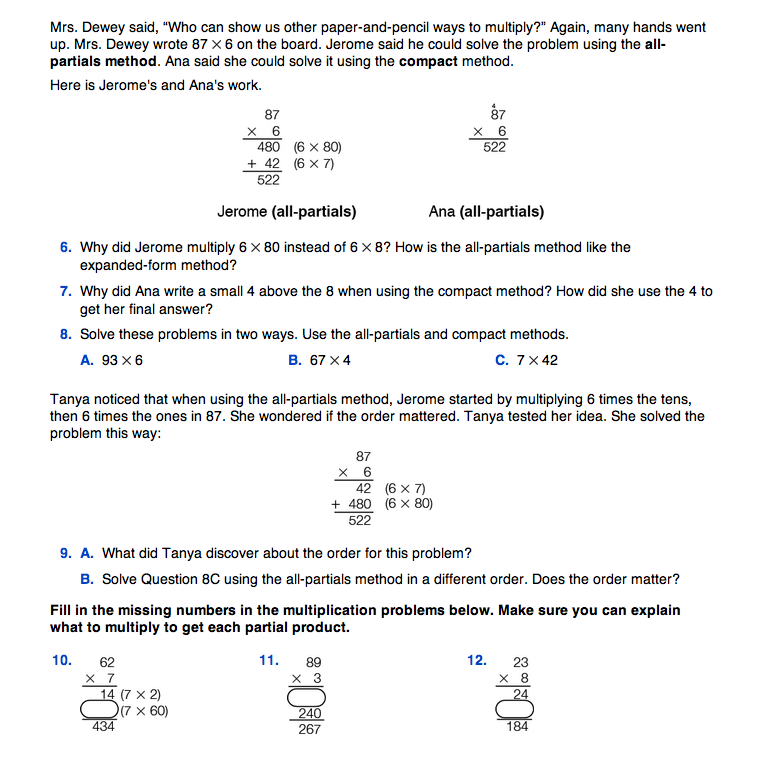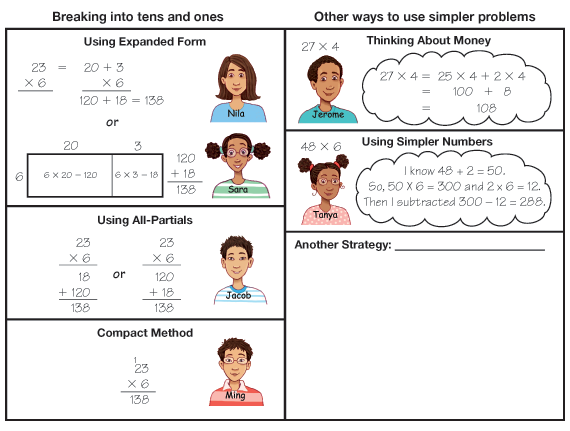Using Multiplication Strategies
Est. Class Sessions: 2Developing the Lesson
Part 1: Strategies for Multiplying 2-Digit Numbers
Mental Math Strategies.
Begin by asking students to solve 5 × 12:
Tell students a mental math strategy is one where they may break a problem into simpler problems. There are several ways to solve 5 × 12 using mental math:
- Mentally break 12 into parts, 10 and 2. Then, 5 × 10 = 50 and 5 × 2 = 10; 50 + 10 = 60.
- Double 5 to make 10; 10 × 12 = 120. Half of 120 = 60.
- Use repeated addition and doubling. Double 12 to get 24, then double 24 to get 48; that makes 4 twelves, so one more 12 makes 60.
- 5 × 11 is 55; one more 5 makes 60.
- Five dimes is 50¢; 5 × 2¢ is 10¢; 50¢ + 10¢ = 60¢.
Have students read the opening vignette on the Using Multiplication Strategies pages in the Student Guide. Discuss the different strategies identified in the vignette. See the TIMS Tip.
Ask:
Pose additional problems that parallel those given in the vignette such as:
27 × 3 10 × 73 49 × 6 5 × 64
Ask students to solve them with a partner and then share their strategies and decide which strategy they like best for each problem.
Have students answer Questions 1–3 and discuss whether everyone will choose to use the same method or strategy to solve a particular problem. The answer, of course, is that they probably will not.
As students explain, elicit further discussion by asking questions similar to the following:
Paper-and-Pencil Methods. Have students refer to the Multiplication Strategies Menu in the Student Activity Book. See Figure 1. Ask students to compare the menu to the strategies the class has been collecting. Ask students to add strategies not represented in the blank space on their Multiplication Strategies Menus. Ask them to demonstrate strategies added.
Question 4 compares using the rectangle method with the expanded-form method that Grace used in the opening vignette to solve 5 × 22. The two methods are similar in that they both break 22 into 2 tens (20) and 2 ones before multiplying by 5 and then adding the two products (100 + 10 = 110). The rectangle method shows this using an area model. Question 5 asks students to solve problems using both methods and compare answers. Have them demonstrate their solution paths on a display or on the board. Half-Centimeter Grid Paper is provided in the Student Activity Book to help students organize their work.
Questions 6–8 discuss and compare the all-partials and the compact methods. Have students demonstrate and explain their solution paths for the problems in Question 8.
Question 9 underscores the fact that the order does not matter when using the all-partials method. That is, the same answer will be reached regardless of whether the tens or the ones are multiplied first. In Questions 10–12, students identify the partial products.
You may assign Questions 1–4 of the Homework section in the Student Guide at this point.



















